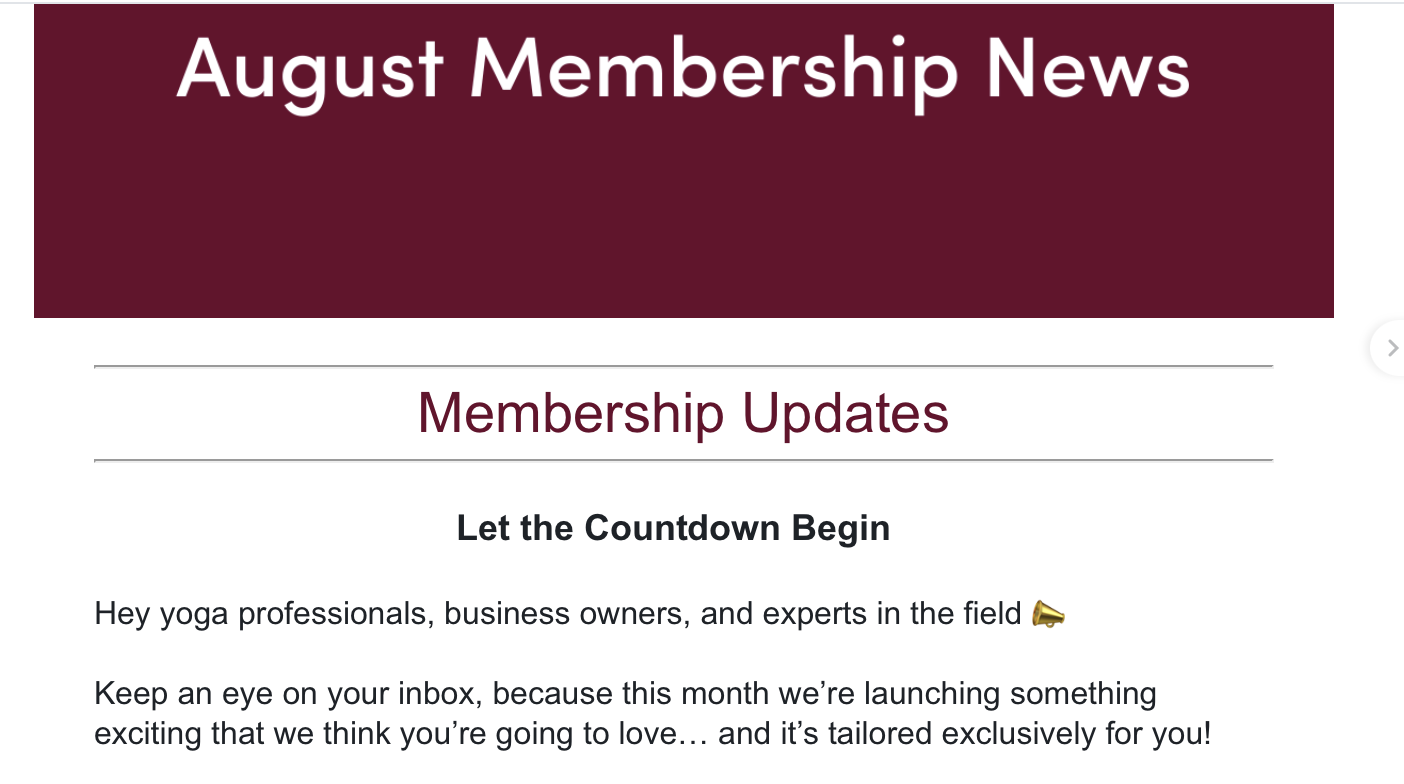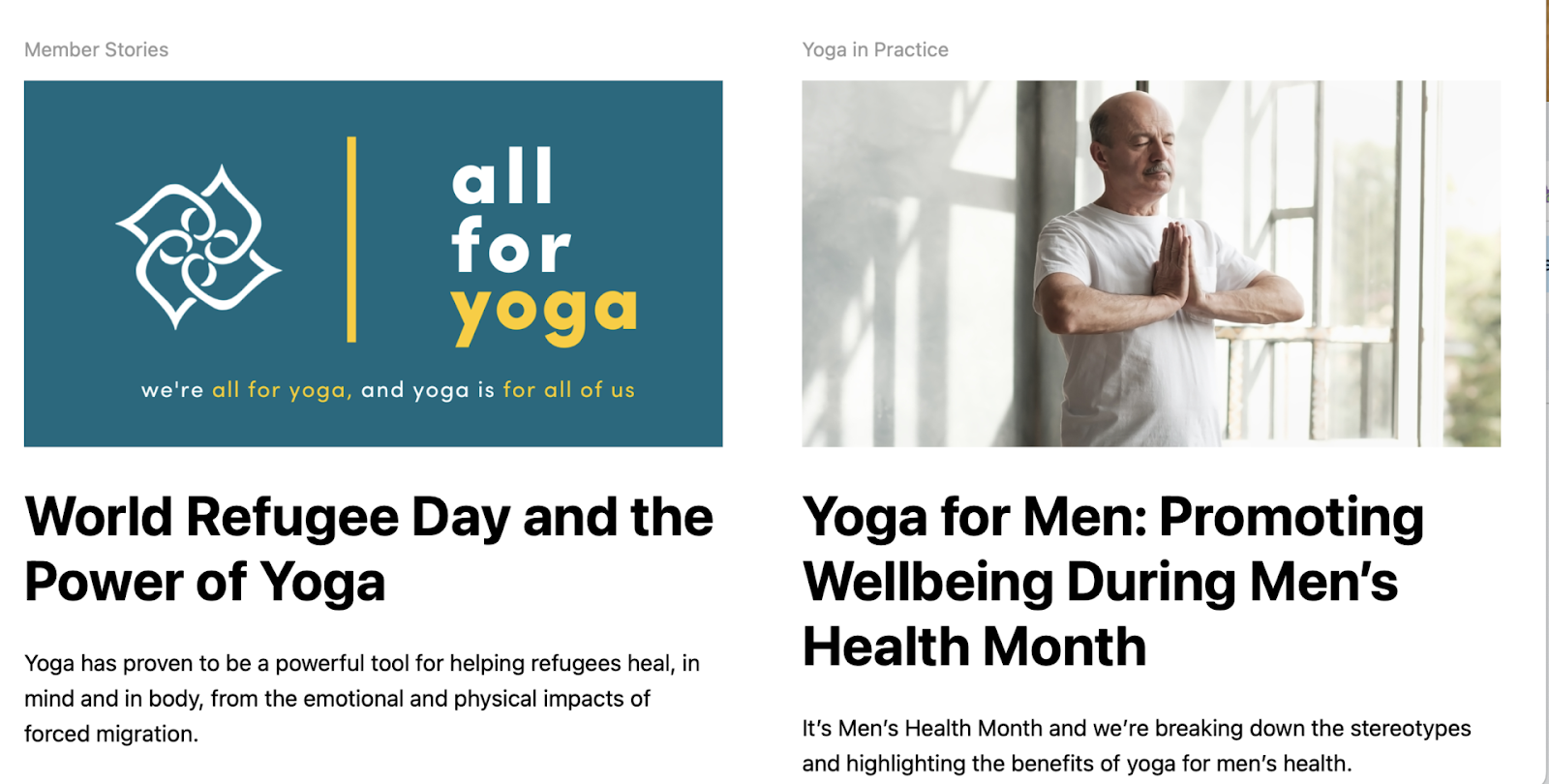
For business owners who don’t happen to also be professional writers, content marketing can feel overwhelming. Take a blank page and add thousands of words, plus a few pictures, and then lay everything out with a great graphic design — that’s a lot to take on. Most entrepreneurs I know have full plates as it is.
If you’re in this situation, you’re not alone. You may have to prioritize between hosting a blog and sending a newsletter. The choice isn’t easy as both content marketing forms have pros and cons. So, which is better: newsletter vs. blog? In this guide, I’ll run down all the benefits and possible challenges of both so you can weigh your options and decide what’s best for your business.
After more than 20 years as a marketing consultant, I’ve crafted thousands of blogs and published almost as many newsletters for small- and medium-sized businesses, nonprofit agencies, and government districts. If you can afford to spend the time or hire a marketing professional for both a newsletter and a regular blog, you should consider this long-term investment in the growth of your company. But if you’re not there yet, you’ll have to choose.
Newsletter vs blog: what’s the difference?
Let’s start answering that question by getting clear on the terms.
What is a blog?
A blog is a short article, usually between 500 and 1,500 words, on a single topic that is published digitally on a platform that can be integrated into your company’s website. Blogs can be published daily or monthly, and they are written to entertain or educate a target audience that may or may not be familiar with your business or your expertise.
What is a newsletter?
Newsletters, meanwhile, are a collection of shorter pieces of information designed in an attractive and consistent format and sent to customers who are already aware of your business. Each company’s newsletter will have a different look and feel, featuring short descriptions around 50 to 100 words and many photos. Newsletters can be hosted on a website page, although they are primarily emailed directly to people on your subscriber list.
We’ll get into the details of the conversation of newsletter vs. blog in a minute, but in general, blogs are outwardly focused content that is optimized for search engines and designed to expand your reach to a wider audience. Newsletters are inwardly focused on current customers or prospects to deepen your relationships and enhance loyalty to your brand. Both are valuable goals, but it’s worth considering if one may be higher priority for you at this time.
The impact of newsletters and blogs in the digital landscape
Globally, digital newsletters and blogs have transformed the way most people receive information from brands and businesses. Statista.com reports that 86% of business owners believe newsletters provide a vital connection between their brands and their customers, which explains why so many add this form of direct communication to the marketing budget.
But that’s nothing compared to the estimated 30.7 million bloggers in the United States as of 2020. Blogs, of course, are just as likely to come from a personal account as from a business, as a variety of commercial models make it possible to earn an income through blogging alone.
Looking back 25 years to when the internet was first starting to get popular, it’s hard to comprehend what an impact these forms of content have made on our lives — but it’s worth taking a moment to honor the big picture. When you take the time to craft any form of content for digital publication, you’re sharing important information that can last beyond your lifetime.
The benefits and drawbacks of newsletters
Now you can answer the general question, “What is a newsletter?” You also know the purpose of newsletters. But we have yet to tackle the pros and cons of creating one for your business.
Benefits of newsletters
Newsletters are by far the best way to connect on a regular basis with the customers and prospects you care about the most. Through your mailing list, you have direct access to your target audience. That in itself is a major benefit — but there are more.
Direct and personalized communication
Arguably, the top customer retention strategies of 2024 can be summed up in one word: personalization. The more an email recipient believes the content is sent directly to them for a specific reason, the more likely they are to respond in the way you’re hoping. This goes beyond starting an email with a person’s first name. Newsletters can be filled with things your recipients want to know.

When you know your intended audience, you can craft content that will engage and delight them. Pay attention to audience demographics, behaviors, ask for feedback, and have your audience segment themselves across interests or email list type. Then, you’ll have a better understanding about what should be included in your newsletter.
High engagement and click-through rates
Newsletters provide ample opportunity for engagement and click-throughs. Based on the nature of your content — providing business updates, product info, links to blog content, and event RSVPs — your newsletter will help you direct traffic to your website and promote purchases. Set email marketing benchmarks to help you measure the success rate of your email newsletter campaigns through opens, click-throughs, bounces, and unsubscribes.
Targeted promotions and offers
Since your email newsletters are reaching your customers, you can easily create targeted promotions and special offers that will make them feel special. Think of your email list as your VIP list. Give them gifts in the form of coupons and early announcements to let them know how important they are for your business. Newsletters provide this opportunity, and it’s worth taking advantage of.
Drawbacks of newsletters
While there are more benefits than drawbacks, it’s important to be realistic when you approach crafting newsletter content for your subscribers. Remember that a quality newsletter takes time and strategy. Think about how your content and design will impact your subscribers’s actions and what particular action(s) you have decided are the most valuable to your business and your subscribers, e.g., clicking a product page link or selecting a button to be directed to an event sign-up page. Newsletter templates will help you on the way to designing newsletters that work for your business. Be prepared, remember your tools, and get results.
Now, let’s take a look at some of the challenges you might encounter as you begin developing email newsletters for your business.
Limited content depth
Unlike blogs, newsletters don’t usually offer enough space to get deep into a topic. To solve this issue, you can combine your efforts with the two content types by introducing blog content within your newsletter. Create a curated collection of links with short descriptions to entice the subscriber to click through to your website and promote the readership of your blog.
Risk of landing in spam folders
The readership of your email newsletters is different than the readership of blog content. While you don’t have the risk of landing in someone’s spam folder for blogs hosted on your website, you should remember that people seek out blogs through search queries or by selecting links they see on social media.
With newsletters, you’re dealing with subscribers. Once someone has subscribed to your email list, they are receiving your emails passively (they’re not actively opting into every email you send). To avoid spam folders, keep your content relevant and avoid practices that make your messages look like they’re not credible. You don’t want all your hard work to go to waste!
Regular content generation pressure
It won’t take you long on your journey to learn how to write a newsletter email before you see that it’s a lot of work. Trust me! I’ve written many newsletters over the years, and the task usually involves hunting down information from different members of the team and, of course, double-checking everything.
One way to reduce the pressure is to organize a standing newsletter meeting so you don’t have to chase your tail to send it out on time. Picking the right template on your email marketing platform will help, too.
The advantages and disadvantages of blogs
Blogs don’t write themselves, either. Even some professional writers would prefer to craft short blurbs in a newsletter over writing long-form blogs. Blogs require an in-depth level of knowledge and research before the writing and editing phases. But the work can be worth it as you track the expanding reach of your business.
Advantages of blogs
I’ve talked to many entrepreneurs who are simply overflowing with creative blog post ideas. It can be a lot of fun to share your knowledge with a wide audience. And that’s not the only reason why blog content is an excellent and effective way to enhance your online presence.
Comprehensive and in-depth content
Since blogs are longer than newsletters and singularly focused, they provide a wonderful opportunity to get into the details of specific topics. One purpose of a blog is to foster community or expertise by providing needed information to a targeted group, for free.

This is especially powerful when you incorporate social media sharing into your blog publication plan. Imagine someone stumbling upon your blog and sharing it on their profile page; then their friends click on it and discover your brand. That’s the way organic traffic works!
Search engine visibility and SEO benefits
Another big plus on the side of blogs in the newsletter vs. blog debate is your ability to work search engine optimization into your content. Often shortened to SEO, this technique employs the use of keywords — words people type into the search bar at the top of Google and other search engines to find answers to their questions.
When your blog contains keywords, the search engine knows that your blog may have the answer. Folks will click, read, and be grateful you took the time to share what you know. That can then be the first step on their customer journey.
Establish thought leadership
You know a lot about your industry. But not every potential customer will know that. When you share what you’ve learned over the years through blog posts, you’ll position yourself as an industry expert worth doing business with.
Drawbacks of blogs
Alas, blogs also have their drawbacks. You’ll need a realistic understanding of the work involved when deciding between starting a newsletter vs. blog for your business.
Need for consistent content creation
A newsletter requires a monthly or quarterly commitment, but blogs must be produced more regularly to make the impact you seek for your business. You must brainstorm and follow a content creation calendar that has you publishing regularly.
You won’t see results if you publish two blogs in one week, wait four months, then publish six more. You need to set a schedule and stick to it. Aim for weekly posts, at least.
Lower engagement rates compared to newsletters
With newsletters, the people who are receiving your email have already established a relationship with you. That means they’re more likely to engage with what you send. Blogs, meanwhile, may get read just as much — but they’re less likely to result in clicks.
You may be feeling like you’re doing a lot of work for nothing, but stay patient. Content marketing is a long game, and it works.
Time-consuming content management
Blogs take time to write. First, you’ll want to set aside planning time to generate ideas and conduct research, then you’ll be ready to start drafting content. Once you have a draft, you’ll need to delegate someone on your team to edit, upload the content to your blog platform, post it on social media, add images, and respond to comments. Content management can be a full-time job if you publish frequently enough, but with the right strategy and resources you’ll be able to create valuable content that strikes a cord with your readers and inspires them to take action.
Choose the right format based on your business goals
As you can see, there are a lot of benefits and drawbacks to both newsletters and blogs — but hopefully, you can also see that content marketing can have a measurable impact on improving the bottom line of your business in a creative and meaningful way.
It’s time to decide which is best for your business right now. To start, take a look at your business goals. Do you want to focus on strengthening existing relationships or expand your reach to new ones? This can help you decide between newsletter vs. blog and direct you on the right path to digital success.




